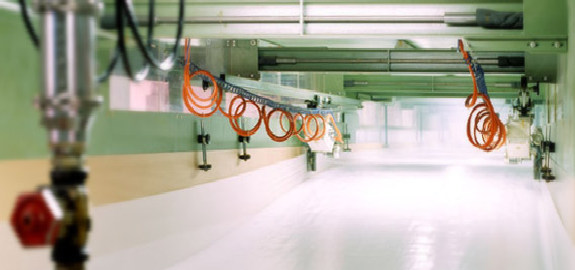In its different applications, Flexible Polyurethane Foam is normally used in sheets or rolls of various thickness and other semi-finished products with multiform and often complex geometry. For this purpose, the blocks coming out from the warehouse are submitted to a “manufacturing” phase consisting in cutting and/or shaping the material according to the profiles required by the downstream use.
All these operations are made by vertical or horizontal cutting machines, single or in series, which are disposed on horizontal lines or on circular carousels.
The Polyurethane block is initially trimmed by removing the “peel“, the most superficial part which has a compact and irregular skin.
Later the block is divided into pieces of different sizes according to the typology of the products to be created, which can be submitted to a shaping that allows to reproduce in section different drawings that correspond to obtainable specific ergonomic performances.

